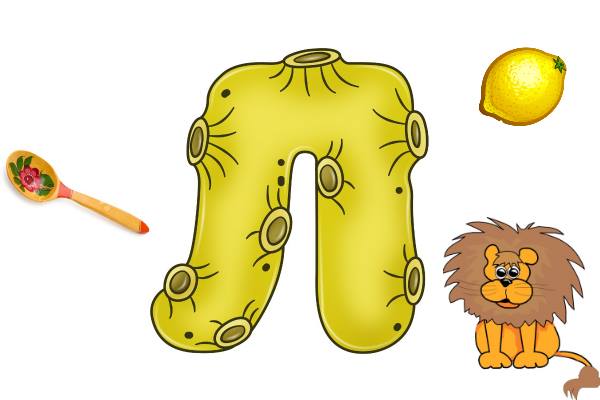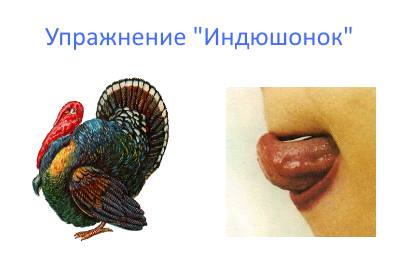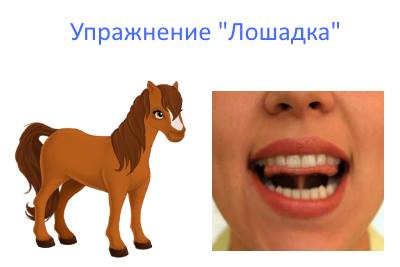Learning to pronounce the sound "L" correctly with the help of articulatory gymnastics

Often in young children there are defects in speech development. One of them is the incorrect pronunciation of the consonant "L". In some cases, the child cannot reproduce this sound at all, and sometimes replaces it with other consonant letters. Often, speech therapists are faced with the fact that children pronounce the sound “Y” instead of “L”. Such violations require immediate correction, in which articulatory gymnastics for the sound “L” can help.
It is necessary to deal with the child regularly with the help of a special set of speech therapy exercises. They will allow you to correctly put the reproduction of any sound that causes difficulties for the baby.

Classes for the sound "L" should include the following types of training:
- Articulation gymnastics for sound.
- Exercises on the activity of the respiratory organs in the process of pronunciation.
- Classes aimed at automating sound reproduction.
It will be good if each workout combines the elements of all the above classes. Exercises should be performed no more than 15 minutes if the baby is only 3-4 years old, and no more than 25 minutes if the child is 5-6 years old.
It is desirable to combine speech therapy gymnastics with tasks that develop the activity of the speech apparatus.
Sound pronunciation exercises
The complex of articulatory gymnastics for sound consists of several exercises that can be performed both with a specialist and at home.
"Turkey"
The task of this exercise is to develop the upper lift of the tongue, as well as the motor activity of its anterior region. The child needs to slightly open his mouth, place his tongue on the upper lip and make movements along it back and forth. In this case, you can not tear your tongue from your lip, but you need to stroke it. You need to start the lesson slowly, and over time increase the speed and try to reproduce any sounds.

If everything is done correctly, then a sound should be heard resembling a turkey's conversation - "bl-bl-bl". When conducting a workout, it is important to ensure that the tongue does not become narrow, and the movements are made not to the side, but clearly back and forth.
"Steamboat"
This lesson is aimed at being able to correctly position the tongue when playing the sound "L".

To do this, the baby will need to open his mouth a little, smiling, stick out his tongue, hold its tip between his teeth and try to make the sound “s-s-s”. Thus, you get something similar to the whistle of a steamer.
If it is observed that the child pronounces a soft “L’” together with “Y”, then it is necessary to ask the baby to stick out his tongue even more, and to clamp his middle area between his teeth, and not the tip.
"Swing"
With the help of this exercise, you can work out the skill of holding and alternating certain positions of the tongue. The child needs to smile, open his mouth, tighten his tongue, and stretch them first to the nose, then to the chin. It is necessary to start this exercise quickly, and then gradually the pace must be reduced, as a result, try to hold the tongue in one position at the nose or at the chin for 3-5 seconds.

With such training, only one language is required. Quite often, children put it on the lower lip, as a result of which the jaw functions from below, and the tongue itself does not work. Therefore, the effect of the lesson is not observed.
"Horse"
The purpose of this exercise is to fix the upper lift of the tongue, stretching the ligament under it. To perform, you should open your mouth wide, smiling. First you need to apply a wide tongue to the sky, and then lower it into the lower part of the cavity. The first lessons should be carried out slowly, gradually increasing the speed of execution.

If the exercise is done correctly, then a sound will be played that resembles the clatter of a horse's hooves. The child needs to open his mouth as wide as possible and so on throughout the workout. The lower jaw should not move. If it is difficult to maintain immobility, then you can help with your hands.
"Harmonic"
The task of this lesson is to consolidate the lifting of the tongue up, to consolidate the skill of holding it in one position for a long time, stretching the frenulum located under the tongue. The mouth must be opened very wide.

It is necessary to do this exercise in this way: open your mouth wide, place your tongue in the sky, fix it in this state as far as possible. Then you need, without lifting your tongue from the palate, with the use of force, pull the lower jaw to the bottom.
How to fix the correct sound reproduction?
Articulation exercises for the development of the pronunciation of the sound "L" should be replaced by automation of the reproduction of this letter. It is necessary to fix the pronunciation no more than 20 minutes after the gymnastics.
You can practice sound reproduction by pronouncing several syllables with the letter "L". For example, you need to repeat: "ly-lu-la, lo-le-li-lu, lu-la-le-lo."
It is also recommended to come up with chains of words that contain this letter. Thus, it is possible to expand the vocabulary of the child. For example, glue, soap, watering can, light bulb, leaf, raspberry, pain, palm, dressing gown, salad, forehead.
Very good help to consolidate the result of tongue twisters exercises with this letter. For example, you can boil the following phrase: “Petya is small, he took the mint, crushed it, saw his mother, did not order the mint to be crushed.” When performing this exercise, you can give the child the opportunity to reflect on this tongue twister, describe or show all the actions in it.
Many parents think that children should pronounce the letter “L” correctly from the moment they started talking. But this statement is fundamentally wrong. Speech therapists say that a clear reproduction of this sound is possible at the age of 5-6 years.
Therefore, you should not torment the child with long workouts, trying to get him to pronounce the letter “L” early. But you still need to do the exercises. All of the above exercises are also suitable for adults.
- Essay by a speech pathologist
- Defectologist-speech therapist: what kind of specialty, where to study
- Speech therapy massage for children at home
- Creation of a developing environment in a speech therapy room
- The development of fine motor skills of hands in preschool children
- Sound analysis of the word: what is it and how to do it correctly
- Kemerovo Savelyeva Elena Nikolaevna

 Live Journal
Live Journal Facebook
Facebook Twitter
Twitter